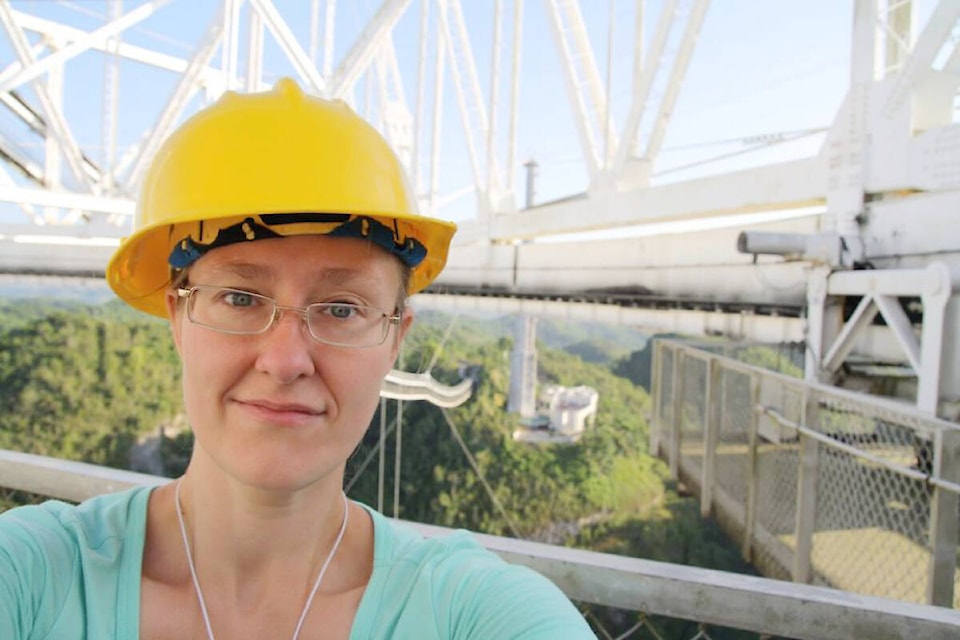One might say the Nanaimo Astronomy Society’s next guest speaker is definitely tuned in to the galaxy.
Jennifer West, radio astronomer and Covington Fellow at the Herzberg Astronomy and Astrophysics Research Centre, National Research Council of Canada, is the guest presenter at the local astronomy club’s meeting Thursday, March 28.
West will talk about Canada’s work with the Square Kilometre Array – an international radio telescope project being built in Australia and several countries in Africa and headquartered in England – and explain what astronomers hope to learn, the challenges being faced as the array’s systems are being developed, and about the new technology itself.
West is known for her work as a research associate at the Dunlap Institute for Astronomy and Astrophysics at the University of Toronto where she studied magnetic fields in supernova remnants and in the Milky Way galaxy.
West said she became interested in radio astronomy when she happened to be working around people who were involved with it, and especially with the Square Kilometre Array, which was just an idea when she started her career. As the project got underway, West found opportunities to get involved and she continues to work with the program.
“Hearing others talk about it, obviously, is the motivator. It starts to raise questions,” she said.
Canada is building the correlator, which is the computer that runs part of the telescope. She said the project is reachingthe point where observations from the telescope will be coming in the next several years.
To give some perspective of the data handling challenge the computer will face, West is currently working with other scientists on the upcoming Polarisation Sky Survey of the Universe’s Magnetism using the Australian Square Kilometre Array Pathfinder radio telescope, which gathers about one terabyte of data every time it is ‘pointed’ at the sky.
“We’re doing a survey which will be pointing the telescope about 1,000 times and so that’s a significant amount of data,” she said.
The data gathered is compressed and organized into ‘data products’ of information extracted from the survey.
“So the volume of the data that we’re going to have to manage and store will be several times that and that is very small compared to what we will have to deal with…” West said. “So you can imagine it’s quite a challenge and so that’s what we’re learning to do. What are the best strategies for managing extremely large data sets?”
Her presentation to the Nanaimo Astronomy Society will be “more general,” she said, as she will discuss the kinds of things that radio astronomy is able to reveal that other kinds of telescopes can’t. West will also talk about the different kinds of radio telescopes currently in use, and discuss the potential for future instruments to be able to answer questions about the formation of the universe.
“I’ll show some images from [radio telescopes] and the kinds of things they’re now revealing to us,” she said. “We now have the best images that we’ve ever had from a radio telescope.”
The Nanaimo Astronomy Society meets Thursday, March 28, at 7 p.m. at the Beban Park Social Centre. West’s Zoom presentation follows interactive family activities. For more information, visit www.nanaimoastronomy.com.
READ ALSO: Nanaimo Astronomy Society speaker recognizes every culture sees stars differently
